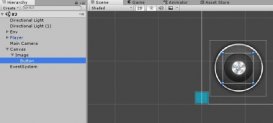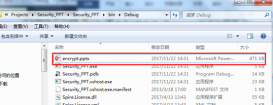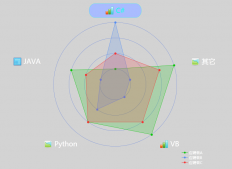本文实例讲述了C#编程获取客户端计算机硬件及系统信息功能。分享给大家供大家参考,具体如下:
这里使用C#获取客户端计算机硬件及系统信息 ,包括CPU、硬盘、IP、MAC地址、操作系统等。
1、项目引用System.Management库。
2、创建HardwareHandler.cs类文件
|
1
2
3
4
5
6
7
8
9
10
11
12
13
14
15
16
17
18
19
20
21
22
23
24
25
26
27
28
29
30
31
32
33
34
35
36
37
38
39
40
41
42
43
44
45
46
47
48
49
50
51
52
53
54
55
56
57
58
59
60
61
62
63
64
65
66
67
68
69
70
71
72
73
74
75
76
77
78
79
80
81
82
83
84
85
86
87
88
89
90
91
92
93
94
95
96
97
98
99
100
101
102
103
104
105
106
107
108
109
110
111
112
113
114
115
116
117
118
119
120
121
122
123
124
125
126
127
128
129
130
131
132
133
134
135
136
137
138
139
140
141
142
143
144
145
146
147
148
149
150
151
152
153
154
155
156
157
158
159
160
161
162
163
164
165
166
167
168
169
170
171
172
173
174
175
|
using System;using System.Collections.Generic;using System.Linq;using System.Text;using System.Management;namespace MyStudy.Utility{ /// <summary> /// 计算机硬件处理类 /// </summary> public class HardwareHandler { public enum WMIPath { // 硬件 Win32_Processor, // CPU 处理器 Win32_PhysicalMemory, // 物理内存条 Win32_Keyboard, // 键盘 Win32_PointingDevice, // 点输入设备,包括鼠标。 Win32_FloppyDrive, // 软盘驱动器 Win32_DiskDrive, // 硬盘驱动器 Win32_CDROMDrive, // 光盘驱动器 Win32_BaseBoard, // 主板 Win32_BIOS, // BIOS 芯片 Win32_ParallelPort, // 并口 Win32_SerialPort, // 串口 Win32_SerialPortConfiguration, // 串口配置 Win32_SoundDevice, // 多媒体设置,一般指声卡。 Win32_SystemSlot, // 主板插槽 (ISA & PCI & AGP) Win32_USBController, // USB 控制器 Win32_NetworkAdapter, // 网络适配器 Win32_NetworkAdapterConfiguration, // 网络适配器设置 Win32_Printer, // 打印机 Win32_PrinterConfiguration, // 打印机设置 Win32_PrintJob, // 打印机任务 Win32_TCPIPPrinterPort, // 打印机端口 Win32_POTSModem, // MODEM Win32_POTSModemToSerialPort, // MODEM 端口 Win32_DesktopMonitor, // 显示器 Win32_DisplayConfiguration, // 显卡 Win32_DisplayControllerConfiguration, // 显卡设置 Win32_VideoController, // 显卡细节。 Win32_VideoSettings, // 显卡支持的显示模式。 // 操作系统 Win32_TimeZone, // 时区 Win32_SystemDriver, // 驱动程序 Win32_DiskPartition, // 磁盘分区 Win32_LogicalDisk, // 逻辑磁盘 Win32_LogicalDiskToPartition, // 逻辑磁盘所在分区及始末位置。 Win32_LogicalMemoryConfiguration, // 逻辑内存配置 Win32_PageFile, // 系统页文件信息 Win32_PageFileSetting, // 页文件设置 Win32_BootConfiguration, // 系统启动配置 Win32_ComputerSystem, // 计算机信息简要 Win32_OperatingSystem, // 操作系统信息 Win32_StartupCommand, // 系统自动启动程序 Win32_Service, // 系统安装的服务 Win32_Group, // 系统管理组 Win32_GroupUser, // 系统组帐号 Win32_UserAccount, // 用户帐号 Win32_Process, // 系统进程 Win32_Thread, // 系统线程 Win32_Share, // 共享 Win32_NetworkClient, // 已安装的网络客户端 Win32_NetworkProtocol, // 已安装的网络协议 } /// <summary> /// Cpu信息 /// </summary> /// <returns></returns> public void CpuInfo() { try { ManagementClass mc = new ManagementClass(WMIPath.Win32_Processor.ToString()); ManagementObjectCollection moc = mc.GetInstances(); foreach (ManagementObject mo in moc) { Console.WriteLine("CPU编号:" + mo.Properties["ProcessorId"].Value); Console.WriteLine("CPU型号:" + mo.Properties["Name"].Value); Console.WriteLine("CPU状态:" + mo.Properties["Status"].Value); Console.WriteLine("主机名称:" + mo.Properties["SystemName"].Value); } } catch { Console.WriteLine("Erroe"); } } /// <summary> /// 主板信息 /// </summary> public void MainBoardInfo() { try { ManagementClass mc = new ManagementClass(WMIPath.Win32_BaseBoard.ToString()); ManagementObjectCollection moc = mc.GetInstances(); foreach (ManagementObject mo in moc) { Console.WriteLine("主板ID:" + mo.Properties["SerialNumber"].Value); Console.WriteLine("制造商:" + mo.Properties["Manufacturer"].Value); Console.WriteLine("型号:" + mo.Properties["Product"].Value); Console.WriteLine("版本:" + mo.Properties["Version"].Value); } } catch { Console.WriteLine("Erroe"); } } /// <summary> /// 硬盘信息 /// </summary> public void DiskDriveInfo() { try { ManagementClass mc = new ManagementClass(WMIPath.Win32_DiskDrive.ToString()); ManagementObjectCollection moc = mc.GetInstances(); foreach (ManagementObject mo in moc) { Console.WriteLine("硬盘SN:" + mo.Properties["SerialNumber"].Value); Console.WriteLine("型号:" + mo.Properties["Model"].Value); Console.WriteLine("大小:" + Convert.ToDouble(mo.Properties["Size"].Value) / (1024 * 1024 * 1024)); } } catch { Console.WriteLine("Erroe"); } } /// <summary> /// 网络连接信息 /// </summary> public void NetworkInfo() { try { ManagementClass mc = new ManagementClass(WMIPath.Win32_NetworkAdapterConfiguration.ToString()); ManagementObjectCollection moc = mc.GetInstances(); foreach (ManagementObject mo in moc) { Console.WriteLine("MAC地址:" + mo.Properties["MACAddress"].Value); Console.WriteLine("IP地址:" + mo.Properties["IPAddress"].Value); } } catch { Console.WriteLine("Erroe"); } } /// <summary> /// 操作系统信息 /// </summary> public void OsInfo() { try { ManagementClass mc = new ManagementClass(WMIPath.Win32_OperatingSystem.ToString()); ManagementObjectCollection moc = mc.GetInstances(); foreach (ManagementObject mo in moc) { Console.WriteLine("操作系统:" + mo.Properties["Name"].Value); Console.WriteLine("版本:" + mo.Properties["Version"].Value); Console.WriteLine("系统目录:" + mo.Properties["SystemDirectory"].Value); } } catch { Console.WriteLine("Erroe"); } } }} |
希望本文所述对大家C#程序设计有所帮助。


















